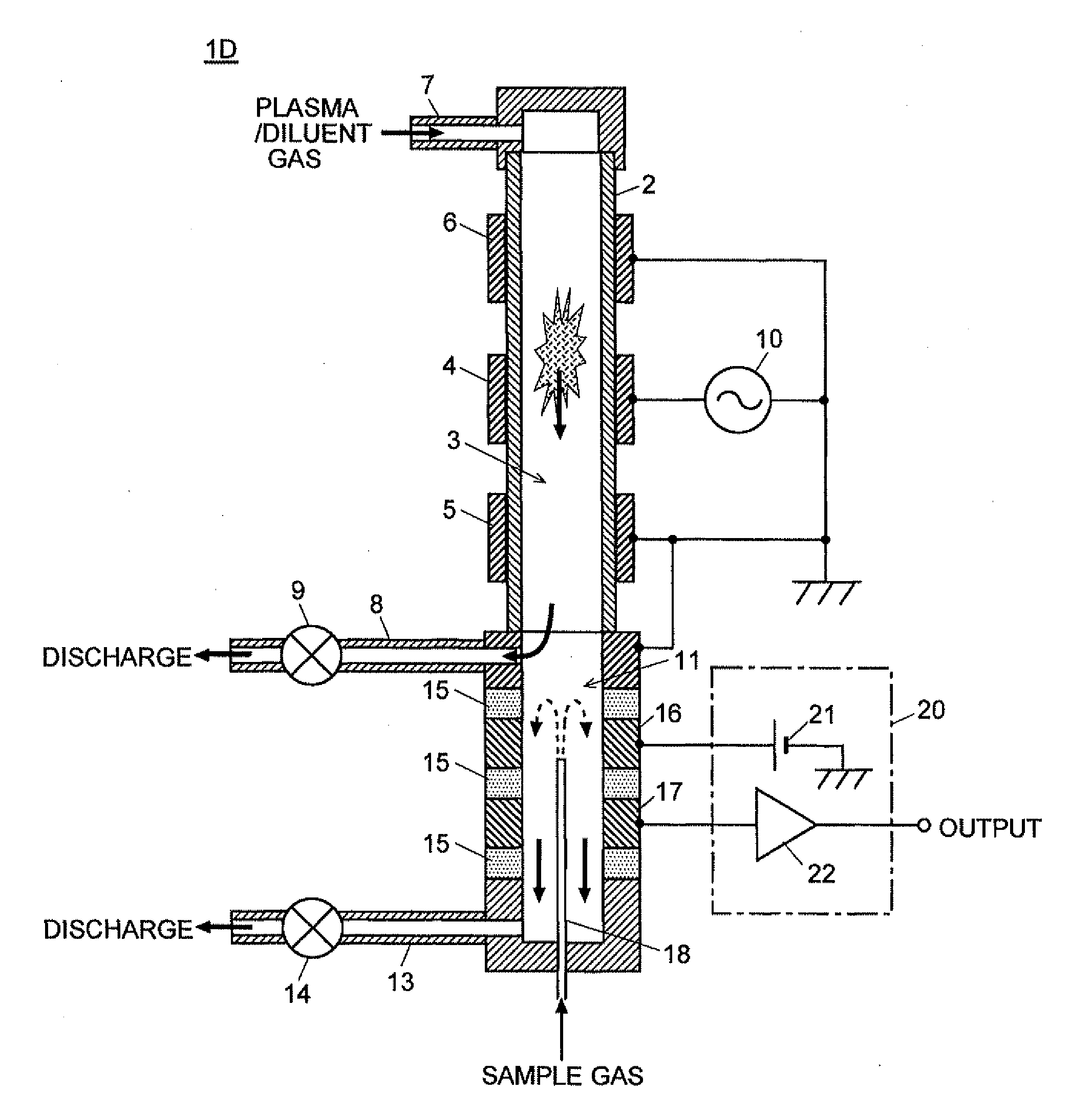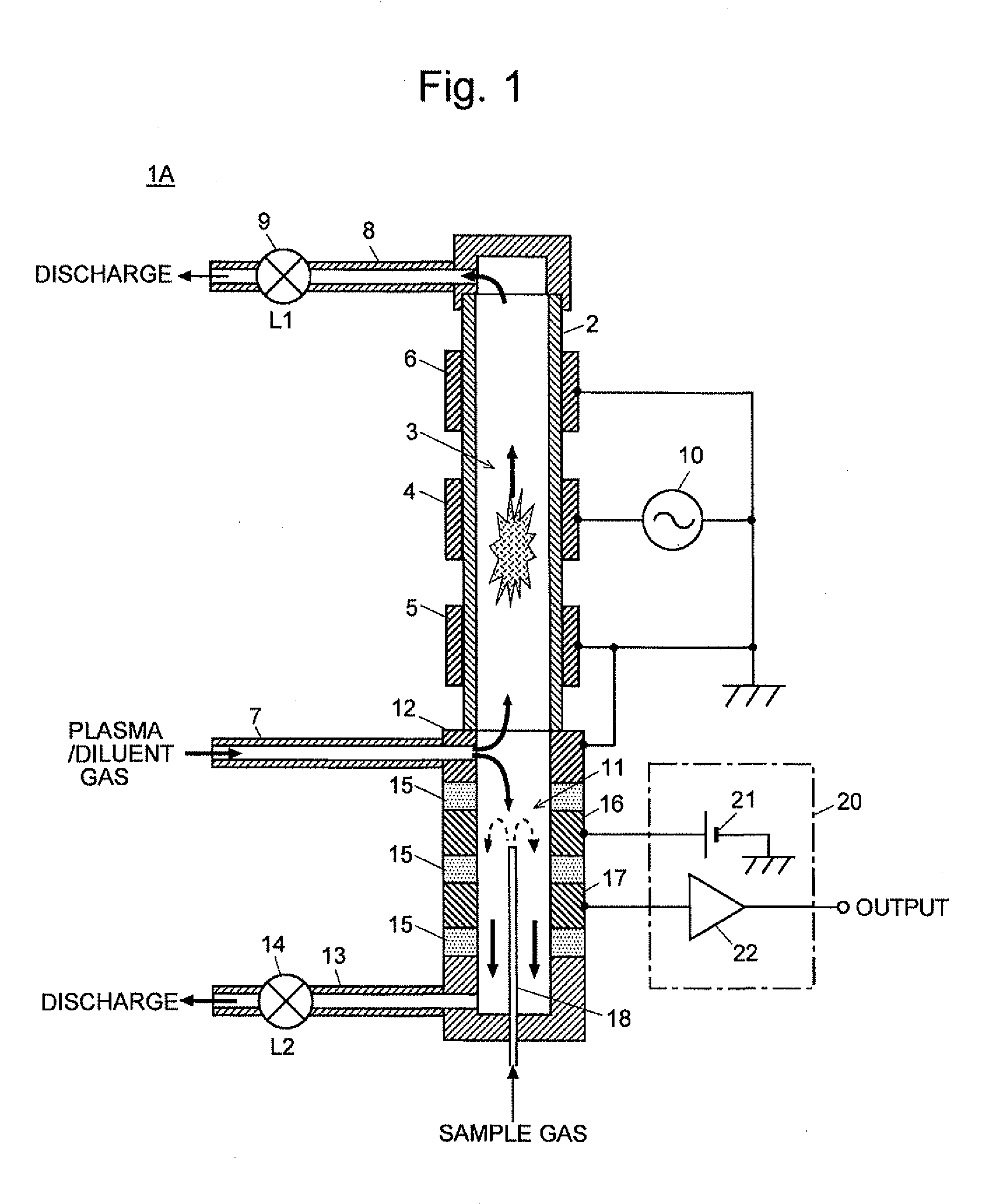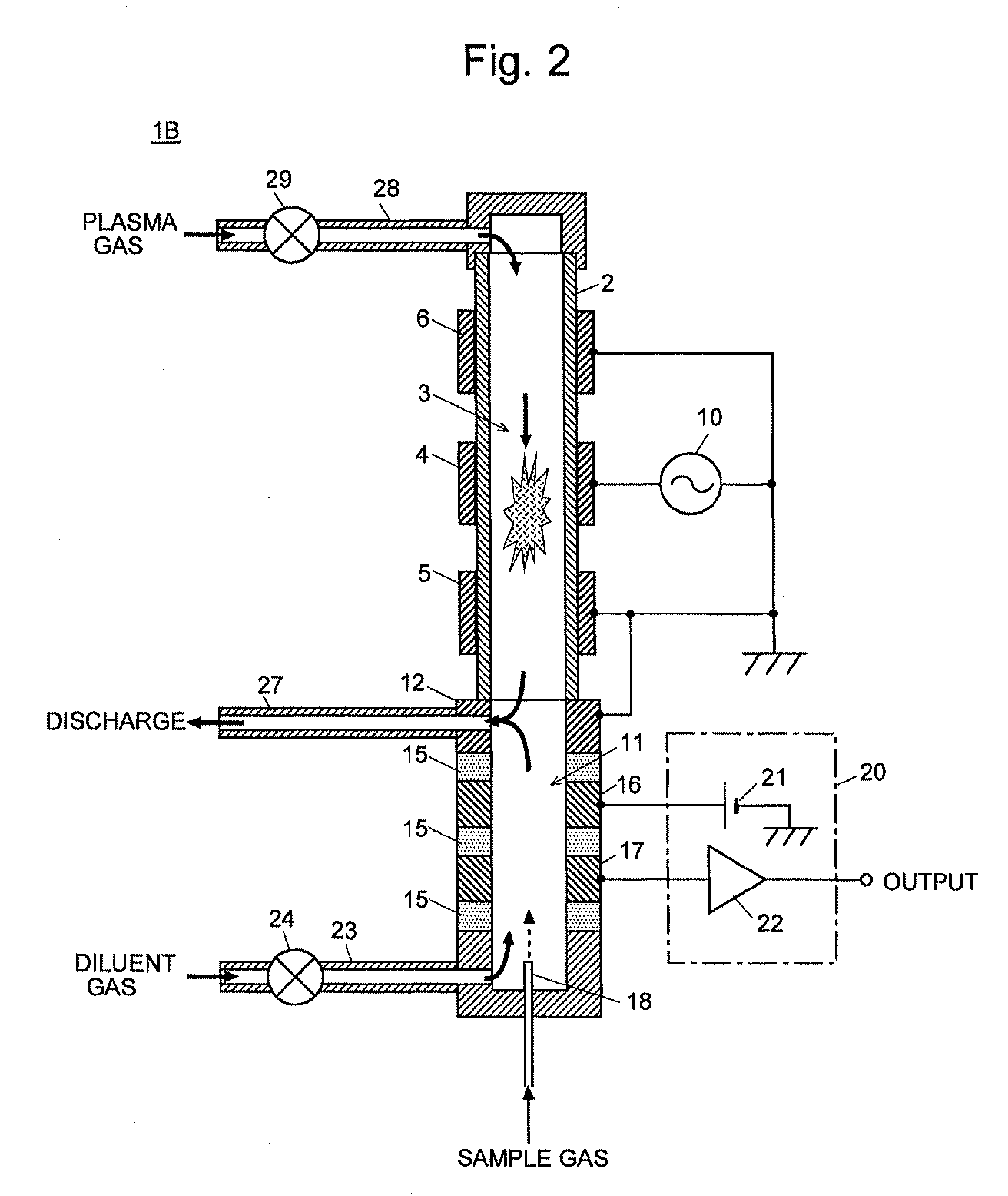Discharge Ionization Current Detector
a technology of discharge ionization current and detector, which is applied in the direction of instruments, measurement devices, scientific instruments, etc., can solve the problems of low ionization efficiency, low ionization efficiency of alcohols, aromatic substances, chlorine substances, etc., and achieves the effects of enhancing plasma stability, improving ionization efficiency, and increasing the flow rate of gas passing through the plasma generation area
- Summary
- Abstract
- Description
- Claims
- Application Information
AI Technical Summary
Benefits of technology
Problems solved by technology
Method used
Image
Examples
first embodiment
[0042]A discharge ionization current detector according to one embodiment (first embodiment) of the present invention is hereinafter described with reference to FIG. 1. FIG. 1 is a schematic configuration diagram of the discharge ionization current detector according to the first embodiment.
[0043]The discharge ionization current detector 1A of the present embodiment includes a cylindrical tube 2 made of a dielectric material, such as quartz. The inner space of this tube 2 is the first gas passage 3. For example, the cylindrical tube 2 may be a quartz tube having an outer diameter of 3.9 mm. Ring-shaped plasma generation electrodes 4, 5 and 6, which are made of a metal (e.g. stainless steel or copper), are circumferentially provided at predetermined intervals on the outer wall surface of the cylindrical tube 2. According to this design, the dielectric wall of the cylindrical tube 2 between the first gas passage 3 and the plasma generation electrodes 4, 5 and 6 functions as a dielectr...
second embodiment
[0054]FIG. 2 is a schematic configuration diagram of a discharge ionization current detector 113 according to the second embodiment of the present invention. The same components as used in the first embodiment are denoted by the same numerals, and hence no detailed explanation will be made for these components. It should be noted that the components corresponding to the gas supply pipe 7, the first gas discharge pipe 8, the first flow controller 9, the second gas discharge pipe 13 and the second flow controller 14 in the first embodiment are structurally identical to these components and yet denoted by different numerals since they have different functions. That is to say, in the discharge ionization current detector of the second embodiment, a plasma gas is supplied into the first gas passage 3 through a plasma-gas supply pipe 28 connected to the upper end of the cylindrical tube 2, and a diluent gas is supplied into the second gas passage 11 through a diluent-gas supply pipe 23 co...
third embodiment
[0057]As already stated, although the detectors of the first and second embodiments have almost the same basic configuration, they have a significant difference in terms of the suitable sample-concentration range. That is to say, the first embodiment is suitable for the high-sensitivity detection of low-concentration samples but not for the detection of high-concentration samples. By contrast, the second embodiment, which is suitable for the detection of high-concentration samples, is inferior to the first embodiment in detection sensitivity since it requires the supply of a certain amount of diluent gas to create a smooth flow of gas through the second gas passage 11. To address this problem, the detector according to the third embodiment of the present invention has a mechanism for appropriately switching the passage configuration between the first embodiment and the second embodiment so as to cover a wide range of sample concentration.
[0058]FIG. 3 is a schematic configuration dia...
PUM
| Property | Measurement | Unit |
|---|---|---|
| frequency | aaaaa | aaaaa |
| outer diameter | aaaaa | aaaaa |
| frequency | aaaaa | aaaaa |
Abstract
Description
Claims
Application Information
 Login to View More
Login to View More - R&D
- Intellectual Property
- Life Sciences
- Materials
- Tech Scout
- Unparalleled Data Quality
- Higher Quality Content
- 60% Fewer Hallucinations
Browse by: Latest US Patents, China's latest patents, Technical Efficacy Thesaurus, Application Domain, Technology Topic, Popular Technical Reports.
© 2025 PatSnap. All rights reserved.Legal|Privacy policy|Modern Slavery Act Transparency Statement|Sitemap|About US| Contact US: help@patsnap.com



